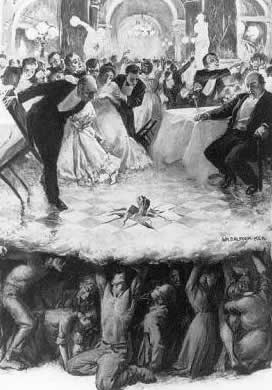The working class usually labored behind the scenes--their living and working conditions were not usually a topic of general discussion.
But after a series of industrial strikes erupted in the early 1880s, government officials started paying attention.
In 1882 the U.S. Senate's Committee on Education and Labor
decided to investigate wages, hours, living and working conditions, and relations between labor and capital. Chaired by Senator Henry Blair of New Hampshire, the committee held hearings in 1883 in Washington, D.C. (in February) and in New York City (later that summer and fall). Witnesses from all walks of industrial life -- including employers, union leaders, rank-and-file workers, and social reformers -- testified to their experiences in the work place, at home, on the picket line, and in the community, shedding light on otherwise invisible facts of industrial life.
Although the
Washington Post dismissed this testimony as so much "chaff," the 1883 Hearings on the Relations Between Capital and Labor had some effect. In 1884 Congress created a federal Bureau of Labor Statistics (in the Department of the Interior); in 1885 Congress pro-
